Вы здесь
Preservation of apple and apricot trees in Ile-Alatau Park.
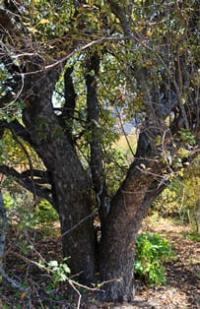
Sivers apple tree in Zailiiskiy Alatau.
“The moon is melting and shining in the clouds,
Apple tree with white curly flowers.
The swell of the clouds is both shallow and gentle.
It's blue near the moon.
n the cold of bare, transparent alleys
The nightingale tries to clatter and chatters.
In the house, already dark, in the open window,
A girl braids her hair under the moon.
The spring story is sweet and new to her,
Told to the world a thousand times."
Ivan Bunin, October 2, 1916 “The First Nightingale.”
Excursions for Sieversii apple tree in mountains of Kazakhstan.
Ile-Alatau State National Natural Park is located on the northern slope of the Zailiysky (Ile-Alatau) ridge. The park was formed by Decree of the Government of the Republic of Kazakhstan dated February 22, 1996 No. 228.
Its area after inventory and transfer of part of the lands in Almaty is 199,703 hectares. The function of the protective zone along the northern, eastern and southern borders is performed by the Almaty State Complex Reserve with an area of 542,400 hectares.
In 2001 - 2003, land management work was carried out on the territory of the Ile-Alatau National Park by specialists from the national park and the Almaty Regional Land Administration with the installation of boundary pillars, on the basis of which state acts for permanent land use were issued for the entire area.
In accordance with Law on Specially Protected Natural Areas, following functional zones are allocated within Ile-Alatau nature park:
- protected area - 57786.0 hectares,
- environmental stabilization - 23280.0 hectares,
- tourism and recreational activities - 14991.0 hectares,
- limited economic activity - 103646.0 hectares.
Territory Ile-Alatau nature park is divided into 4 branches, 12 forest districts and 132 bypasses, including branches:
- Aksai - 56992 hectares - 29 patrols with an average protection area of 1965 hectares,
- Medeusky - 41922 hectares - 35 patrols with an average security area per patrol - 1998 hectares,
- Talgarsky - 27938 hectares - 30 bypasses with an average area per 1 bypass - 931 hectares,
- Turgensky - 72852 hectares - 31 bypasses, with an average area of 2512 hectares.
Security is provided by 178 inspectors (foresters and rangers).
The main protected wealth of the Ile-Alatau State National Natural Park is forest land. They occupy an area of 75,207 hectares, including: areas covered with forest are 62,262 hectares, non-forested - 10,969 hectares. Thus, the forest cover of our protected natural area is 37.7%.
The research was carried out in accordance with the “Methodological guidelines for maintaining the Chronicle of Nature in Specially Protected Natural Areas”, approved by order of the Committee for Forestry and Hunting of the Ministry of Agriculture of the Republic of Kazakhstan dated April 18, 2007; the key stage of these studies is observations at permanent monitoring sites.
n accordance with the National Strategy and Action Plan for the Conservation and Balanced Use of Biodiversity of the Republic of Kazakhstan, approved by the Government of the Republic of Kazakhstan and published in 1999, of all types of forest ecosystems available in the national park, according to the classification of leading geobotanists of Kazakhstan, professors E.I. Rachkovskaya, L.Ya. Kurochkina, N.P. Ogar and I.I.
Roldugin includes four types in the category of especially rare ones, requiring special study and regular monitoring:
1) moss spruce forests of Picea schrenkiana (this is primarily the Chinturgen massif, which is a natural monument),
2) hackberry - natural massifs of a relict species listed in the Red Book - Caucasian hackberry (Celtis caucasica Wild.), located in the valley of the river. Malaya Almatinka,
3) apple forests dominated by the Sievers apple tree (Malus sieversii (Ledeb.) M.Roem, a relict species listed in the Red Book of Kazakhstan,
4) apricot forests dominated by common apricot (Armeniaca vulgaris Lam.), also listed in the Red Book of Kazakhstan.
The last two types of ecosystems are especially valuable primarily because their dominants - apple and apricot - are keepers of unique germplasm, wild relatives cultivated fruit plants, the study and preservation of which is a task not only of national and global, but also of a planetary scale.
Unique wild fruit forests are mostly confined to the northern slopes. They are quite common on flat terraces and ridges, along the bottoms of gorges and along river beds. On the slopes of southern exposure there are scattered groves, mainly apricot thickets, which occupy platforms and terraces under the rocks in the lower parts of the gorges.
The ecosystems of wild fruit forests of the Ile-Alatau National Park are distinguished by rich flora. They also include other relatives of cultivated fruit and berry plants (hawthorns (Crataegus) - Dzungarian, Almaty, Altai; raspberries, blackberries, barberries, currants - Meyer and Yanchevsky), as well as some relict and endemic plants.
One example of the uniqueness of these ecosystems is Mushketov's curly grass (Atraphaxis muschketovii Yu-asn.) - a highly ornamental shrub from the Buckwheat family, the range of which (from Kaskelen to Turgen) practically does not extend beyond the boundaries of the Ile-Alatau National Park and the Almaty Nature Reserve.
Apple and apricot forests are represented by tracts of various sizes, small groups and individual trees throughout the national park. The Sivers apple tree is distributed throughout almost all gorges of the national park: Issyk, Mikushino, Soldatsai, Talgar, Kotyrbulak, Bolshoye and Maloye Almaty, Aksai, Kaskelen, Turgen at an altitude of 800 to 1800 meters above sea level.
The largest tracts of apple forests are located in the Belchabdar gorge, as well as in the designated A.D. Dzhangaliev back in the 60s of the last century in the selection, genetic site “Kuznetsova Shchel”, with an area of about 200 hectares, located in the Taldy-Bulak valley of the Malovodnenskoye forestry of the Turgen branch.
In this area, the apple tree has great polymorphism in height, morphological characteristics, winter hardiness, productivity, and immunity to pests and diseases. Fruiting trees vary greatly in fruit weight (30 - 120 grams), shape - spherical, flattened and round, round and conical, elongated and round.
Color ranges from green to greenish-yellow and yellow with bright integumentary coloration. According to taste - from sour-bitter to sweet-fresh, chemical composition and ripening time. The species is of great interest for reintroduction and selection, especially when breeding varieties adapted to drought and frost-resistant, high-vitamin varieties.
In this area A.D. Dzhangaliev, R.M. Turekhanova and T.N. Salova in 1990 selected 20 economically valuable forms of apple trees, and five of them received patents and copyright certificates from the Republic of Kazakhstan.
Among the wild apple trees there are forms for table, technical, breeding, vitamin and rootstock purposes. Table forms are characterized by a pleasant sour-sweet taste, beautiful appearance of the fruit, and are characterized by a low content of tannins (0.066%), which determines their suitability for fresh consumption.
Technical forms are raw materials for the wine-making and fruit-canning industries. Rich in pectin substances; according to average long-term data, the content of pectin substances in wild apple trees is higher than in the fruits of zoned varieties.
Their quantity in fruits of technical forms is above 1%, tannins - 0.46%. The high content of pectin substances will avoid the addition of gelling components during processing, and their biological activity as antiradiants is beneficial for the human body.
Vitamin forms have a high content of ascorbic acid in fruits; they can be used in breeding high-vitamin varieties; fruits are an excellent raw material for obtaining natural high-vitamin juices. They contain an average of 740 mg% of substances with vitamin P activity, which is 7.4 times more than in cultivated varieties.
The high content of P-active substances in combination with increased C-vitamin content is especially valuable due to their mutually reinforcing effect. The forms used in breeding have late autumn and winter fruit ripening, winter hardiness, and immunity to pests and diseases.
Rootstock species of apple trees are highly adaptable to winter conditions, drought, and are characterized by the productivity of seed rootstocks, compatibility and productivity of grafted varieties. In 2010, the Ile-Alatau National Natural Park carried out work to certify this site.
The official passport of the Kuznetsovo Gorge genetic reserve was approved by the Forestry and Hunting Committee of the Ministry of Agriculture of the Republic of Kazakhstan on September 16, 2010. In the apple forests of the national park, we established sites in the altitude range of 1350 - 1550 meters above sea level in three gorges (Kuznetsova gorge, Soldatsai and Aksai).
On sites in apple forests, 158 species of higher plants were identified. According to these descriptions, the most constant companions of the apple tree are two species trees: Songhar hawthorn (Crataegus songarica) and common apricot (Armeniaca vulgaris).
There are also six types of shrubs: Semenov's euonymus (Euonymus semenovii), Tatarian honeysuckle (Lonicera tatarica), spherical barberry, Bykov's barberry, multi-legged (Berberis sphaerocarpa), laxative honeysuckle, laxative kushina (Rhamnus cathartica), blue and common blackberry (Rubus caesius, R. idaeus).
About 20 herbaceous perennials:
agrimony or aconite (Aconitum leucostomum), agrimony or Asian agrimony (Agrimonia asiatica), urban or pharmaceutical gravilate, agrimony, clove root (Geum urbanum), Thuringian hatma (Lavatera thuringiaca), St. John's wort, hairy wort (Hypericum hirsutum), goldenwort (Bupleurum aureum), field phlomis (Phlomis pratensis), blackhead (Prunella vulgaris), oregano (Origanum vulgare), elecampane (Inula helenium), forest shortleg (Brachypodium sylvaticum), hedgehog (Dactylis glomerata), bentgrass giant (Agrostis gigantean), knotweed, tanning ram (Polygonum coriarium), common hop, climbing hop (Humulus lupulus), sticky napkin (Melandrium viscosum), yellow cornflower (Thalictrum flavum), sweet violet (Viola suavis).
Some of them (hawthorn, raspberry, blackberry, hedgehog, aconite, oregano, elecampane, blackhead, Ligularia macrophylla, Trifolium pratense, Geranium pmtense, G. robertianum) are often found in significant abundance, being background species or subdominants of the described plant communities.
Characterized by the constant presence (sometimes in significant abundance) of weed species (Galium aparine, Arctium leiospermum, Artemisia absinthium, Urtica dioica), which indicates a fairly high anthropogenic influence of the apple forests of the national park.
Common apricot is found in the gorges of the Bolshaya and Malaya Almatinok, Talgar, Aksay, Issyk, Kotyrbulak, Turgen rivers at altitudes of 800 - 1600 meters above sea level on the slopes of southern exposure as single trees, groups or small groves.
Its optimal habitat is located in the altitude range of 1100 - 1300 meters above sea level. The population of this species in the park numbers several thousand individuals. For example, in the valley of the Turgen River (without tributaries) within the national park, we counted at least 2000 individuals in 2009.
Single young apricot trees rise here to a height of 1650 meters above sea level. The only apricot reserve with an area of 80 hectares in the Trans-Ili Alatau is located in the Kotyrbulak gorge, which belongs to the territory of the Talgar branch of the national park. On its territory A.D. Dzhangaliev, T.N. Salova selected and described about 20 forms of apricot, 6 of which were patented as especially valuable varieties of clones.
The official passport of the Kotyrbulak genetic reserve was also approved by the Forestry and Hunting Committee of the Ministry of Agriculture of the Republic of Kazakhstan on September 16, 2010. The monitoring site in the Kazachka River valley is located in the lower third of a steep (about 45 degrees) gravelly, rocky slope of southwestern exposure (1500 meters above sea level).
The dimensions of the site are 50 x 50 meters. The described community can be classified as apricot meadowsweet, cereal, and forb. It contains 3 species of trees - apricot, Sivers apple tree, Djungarian hawthorn (Crataegus songorica C. Koch) and 4 species of shrubs - meadowsweet (Spiraea lasiocarpa Kar. et Kir.), rosehip (Rosa platyacantha Schrenk), Tatarian honeysuckle ( Lonicera tatarica L.), jester (Rhamnus cathartica L.).
The density of the tree shrub layer does not exceed 30%. The floristic composition of the grass stand includes 55 species from 22 families, the leading among which are Asteraceae, Poaceae, Rosaceae, Fabaceae, Brassicaceae, Apiaceae.
The dominant role in this community is played by wormwood (Artemisia santolinifolia (Turcz. ex Pamp.) Krasch., A. dracunculus L.), licorice (Glycyrrhiza uralensis Fisch.), bedstraw (Galium verum L.), as well as cereals - Melica transsilvanica Schur and annual Bromus oxyodon Schrenk, Phleum paniculatum Huds.
Since 2008, monitoring studies at designated sites, including six with the participation of apple and apricot trees, have been continued by scientific staff of the national park, Candidates of Biological Sciences R.M. Turekhanov and A.A. Ivashchenko.
Regular observations are carried out to determine the density and age composition of the forest stand, phenology, assessment of the intensity of flowering and fruiting of tree and shrub species and indicator species of herbaceous plants.
All abnormal phenomena and changes in plants, as well as their exposure to pests and diseases, are also taken into account. In order to control the development of particularly dangerous pests and diseases of forest species, in recent years a contractual scientific topic “Monitoring the spread of harmful organisms in coniferous and deciduous forests of the IAGNPP", executor - researcher at the Institute of Plant Protection of the Ministry of Agriculture of the Republic of Kazakhstan, candidate of biological sciences N.Zh. Ashikbaev.
The Department of Forest Protection and Reproduction, as well as all branches of the national park, carry out a lot of work in terms of carrying out and preparing reforestation measures. There are 7 temporary nurseries here, including: in the Turgen branch - 3, in the Aksai branch - 2, in the Medeu and Talgar branches - 1 each.
The total area of the nurseries is 6.5 hectares. To create wild fruit crops for the next 25 years, an area of 2265.0 hectares has been determined, of which: Sievers apple trees - 1409.0 hectares, apricot trees - 826.0 hectares, boyarka - 30.0 hectares.
Since 2008, forest crops have already been created on the territory of the Ile-Alatau State National Forest for two main species: apple tree - 81.1 hectares, apricot - 115.2 hectares. The condition of the plantings today is satisfactory (survival rate is 50% and above).
In the future, the expansion of the area planted with wild apple trees on the territory of the national park will be carried out using material grown at the Almaty Forest Breeding Center (director S.S. Baimukhanbetov).
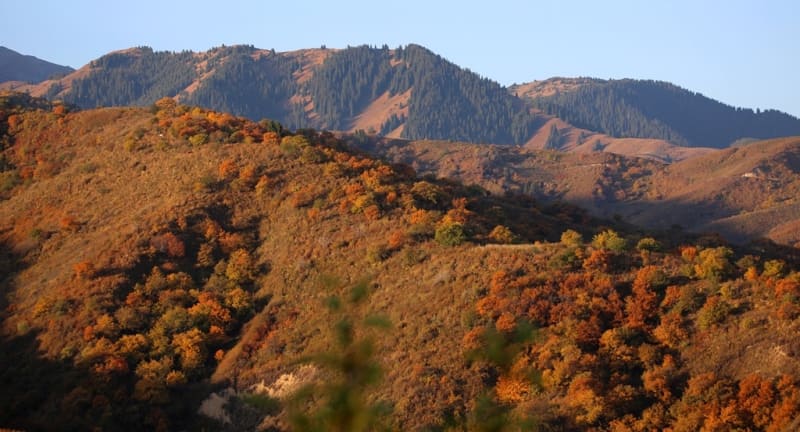
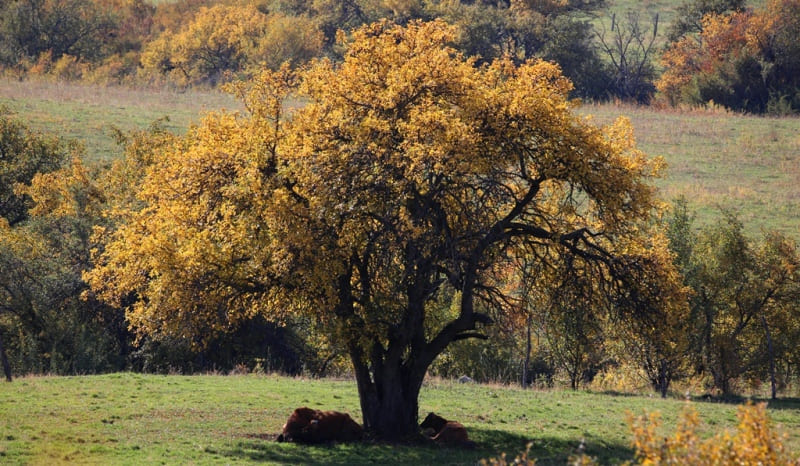
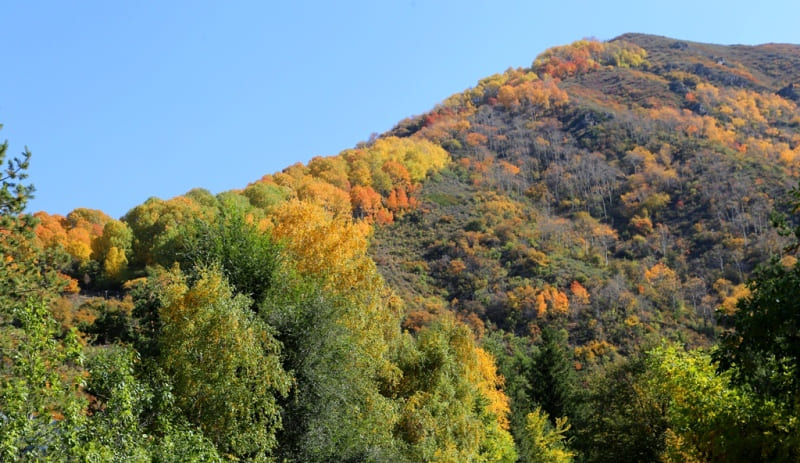
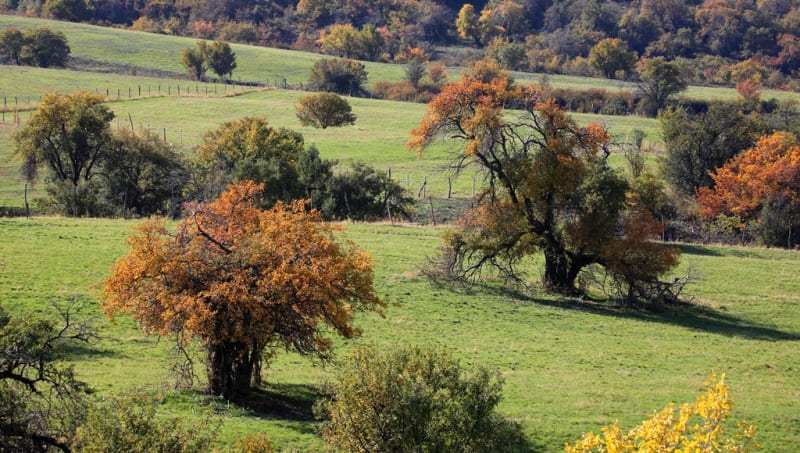
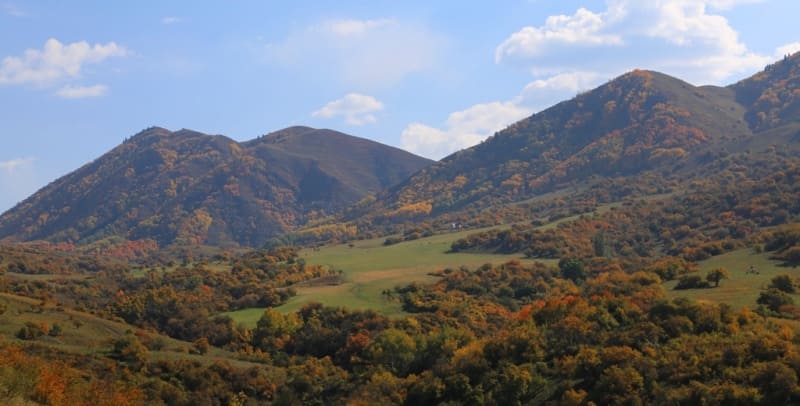
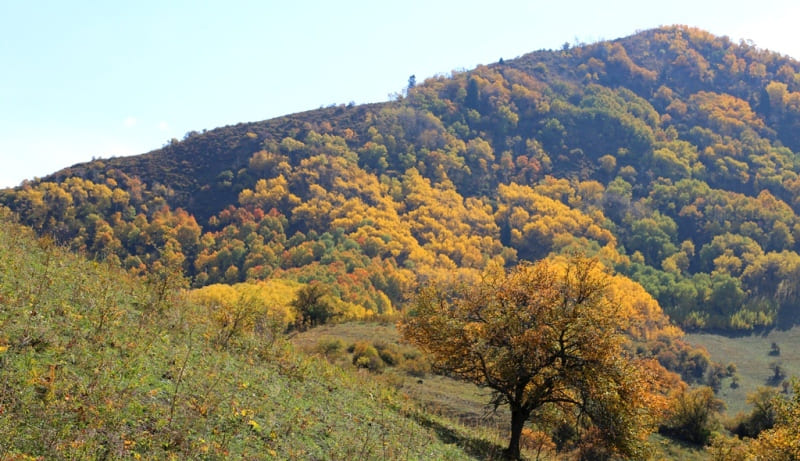
Literature:
Guidelines for maintaining the Chronicle of Nature in specially protected natural areas with the status of a legal entity. Approved by order of the Forestry and Hunting Committee of the Ministry of Agriculture of the Republic of Kazakhstan dated April 18, 2007 No. 156. - 46 p.
National strategy and action plan for the conservation and balanced use of biodiversity of the Republic of Kazakhstan. Kokshetau.-1999. P.91 - 93.
Red Book of the Kazakh SSR. Part 2. Plants. Alma-Ata.-1981.-260 p.
Turekhanova R.M., Ivashchenko A.A. To the flora of trees and shrubs of the Ile-Alatau National Park Biodiversity and sustainable development of nature and society. Mater. Intl. scientific-conf. Almaty, 2009, pp. 109 - 111.
Industrial property. Official bulletin. Astana, 2006 No. 7. P. 123 - 137.
Ivashchenko A.A., Korobko P.V., Skripskis V.Yu. On the biodiversity of forest ecosystems of the Ile-Alatau National Park at monitoring sites Materials of Int. Scientific and practical conf. “Current problems of forest management and staffing of the forest sector of the economy of Central Asian countries.” Almaty. 2008, pp. 229 - 231.
Turekhanova R.M., Ivashchenko A.A. Apricot trees of the Ile-Alatau National Park are the primary object of monitoring. Materials of the All-Russian Conf. (with international ustiya) “Flora and vegetation of anthropogenically disturbed areas.” Vol. 6.-Kemerovo. 2010 pp.92 - 94.
Authority:
Authors: M.S. Ainabekov, P.M. Turekhanova, A.A. Ivashchenko.
https://articlekz.com/article/8869
Photos by:
Alexander Petrov.







